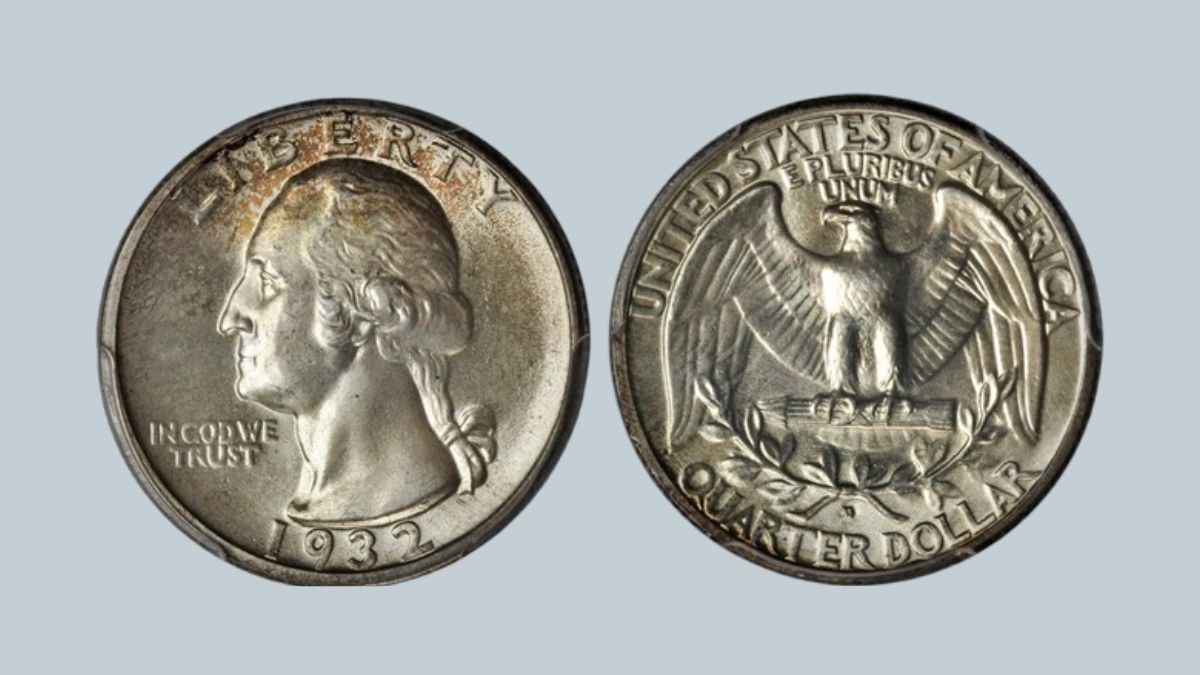Coin collecting can lead to the finding of rare treasures, with some coins fetching prices that rival small fortunes. Among the many coins that have captured the attention of collectors, the Bicentennial Quarter stands out, especially a rare version valued at nearly $50 million. Let’s look into this extraordinary quarter and three other valuable quarters, each worth over $150,000, and look into their history, rarity, and what makes them so valuable.
Bicentennial Quarter
The 1976 Bicentennial Quarter was minted to celebrate 200 years of American independence, and while most are only worth their face value, one rare variant is valued at almost $50 million. This special version was struck in 40% silver as part of a mint set designed for collectors. What makes this coin so valuable is a rare minting error known as a “double die obverse,” where the design elements are duplicated due to a misalignment during the minting process. This error, along with the quarter’s pristine condition and historical significance, makes it one of the most sought-after coins in the world of numismatics. For collectors, owning this piece is like holding a piece of history worth millions.
1932 Washington
Valued at over $150,000, the 1932 Washington Quarter is a cornerstone of American coin collecting. It was initially intended to be a one-year commemorative issue to honor the 200th birthday of George Washington. However, its popularity led to the Washington quarter becoming a permanent part of U.S. currency. The rarest and most valuable of these coins are those minted in Denver, marked with a small ‘D,’ and especially those in uncirculated condition. The rarity of these quarters stems from the Great Depression, a time of reduced coin production and circulation, making high-quality examples hard to find.
1916 Standing Liberty
Another highly coveted coin is the 1916 Standing Liberty Quarter, which exceeds the $150,000 mark. This coin is known for its elegant design featuring Lady Liberty holding a shield and olive branch, symbolizing both peace and defense. Only 52,000 of these quarters were minted, and many were lost or heavily circulated, making pristine examples exceptionally rare. Collectors are particularly drawn to versions with full head detail, which indicates a higher-quality strike from the mint. The combination of limited production and artistic significance makes this quarter a true gem in coin collecting.
1796 Draped Bust
The 1796 Draped Bust Quarter is one of the earliest quarters ever minted by the United States, with a value well over $150,000. With a mintage of just 6,146 coins, this quarter is exceedingly rare, especially in high-grade condition. Its “Draped Bust” design, featuring Lady Liberty, is a classic representation of early American coinage, and its historical importance adds to its allure. Collectors and historians treasure this quarter for its significance as one of the first coins ever produced by the U.S. Mint, making it a highly sought-after item for any serious numismatist.
Coin collecting is more than just a hobby—it’s a journey into history, where rare finds can lead to staggering financial rewards. These quarters, whether through minting errors, limited production, or historical significance, represent some of the most valuable and fascinating pieces of American numismatic history. For collectors, these coins are not just currency but prized possessions that tell the story of the nation’s past.
FAQs
What makes the $50 million Bicentennial Quarter so valuable?
A minting error called a double die obverse and its silver composition.
Why is the 1932 Washington Quarter worth over $150,000?
Its rarity, especially those minted in Denver during the Great Depression.
How rare is the 1916 Standing Liberty Quarter?
Only 52,000 were minted, and very few remain in mint condition.
What is special about the 1796 Draped Bust Quarter?
It’s one of the first quarters ever minted, with a very limited mintage.
What does “double die obverse” mean in coin collecting?
It refers to a minting error where the design is struck twice, creating a duplicated image.
